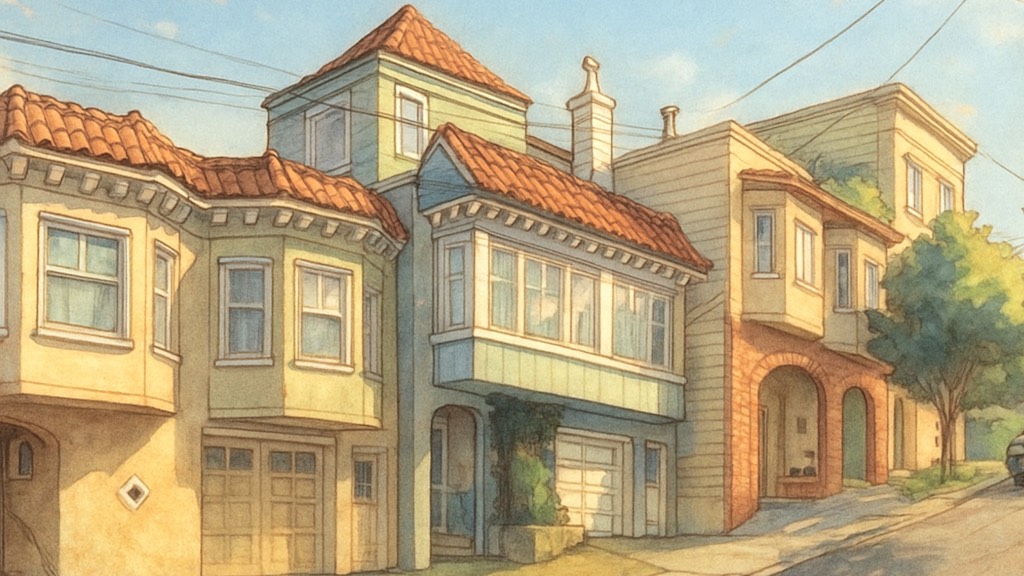
A Historic Hub That Shaped Early Crypto Culture and Innovation
In the annals of cryptocurrency lore, few addresses evoke as much fascination as the Crypto Castle, the communal home in San Francisco that became an early, unlikely epicenter for blockchain builders and digital dreamers. Located at 579 Kansas Street in Potrero Hill, the Crypto Castle helped incubate a generation of crypto talent, foster a new style of decentralized collaboration, and forever changed how tech communities might function.
Now recognized as a remarkable piece of crypto history, the Crypto Castle stands as a symbol of both the promise and chaos that defined the early years of digital currency.
The Early Days: Foundations of a Cultural Landmark
The Crypto Castle was founded in 2015 by Jeremy Gardner, a Bitcoin advocate and entrepreneur who recognized that sharing resources—and rent—in one of the world’s most expensive cities could offer young crypto builders a practical launchpad. With its sweeping views of downtown San Francisco, quirky décor, and constant stream of new faces, the house quickly earned a reputation as the heart of crypto’s countercultural movement.
Residents and guests hailed from all over the world. Many were recent university graduates, startup founders, engineers, traders, or early investors in digital assets. Many came with little more than laptops and big ambitions. There were hackathons around the kitchen table, late-night arguments about decentralization philosophy, and, occasionally, house parties that spilled onto social media.
Notable Residents and Stories from the Era
The Crypto Castle’s roster of residents reads like a who’s who of blockchain’s earliest trailblazers. Jeremy Gardner, the original founder, emerged as a prominent investor and champion for blockchain education. Other residents and frequent guests included:
- Olaf Carlson-Wee, who later founded the crypto hedge fund Polychain Capital.
- Joey Krug, co-founder of Augur, one of the initial decentralized prediction marketplace platforms.
- Linda Xie, early Coinbase product manager and later co-founder of Scalar Capital.
- Numerous visiting developers, researchers, and digital artists who would later make their mark in DeFi, NFTs, and blockchain law.
Stories abound of ideas sketched on napkins at the Castle’s kitchen counter turning into startups that raised millions. Some of the earliest industry meetups and networking events unfolded on the Castle’s rooftop or in its crowded living room. These gatherings sparked collaborations, seeded investments, and even ignited friendly rivalries that shaped the culture of the entire crypto ecosystem.
Life at the Crypto Castle: Collaboration and Chaos
Life at the Castle could be both inspiring and unpredictable. Days might start with code reviews, technical debates, and impromptu whiteboard sessions. Evenings often led to philosophical conversations about the future of finance, interspersed with lively parties attended by entrepreneurs, venture capitalists, and journalists documenting the dawn of a new tech revolution.
The house also became a safe haven for those new to the city, offering affordable rent and a built-in community. With expensive rents elsewhere in San Francisco, the Castle’s communal model allowed more people to take a risk on blockchain innovation. It was common for guests to crash on couches for weeks, as long as they contributed to the work and spirit of the house.
Events and the Broader Crypto Movement
The Crypto Castle was more than just a crash pad. It became the venue for workshops, fundraisers, and panel discussions on everything from Bitcoin scaling to regulatory issues. Many residents became ambassadors for cryptocurrency, speaking at international conferences and mentoring the next generation of builders.
The house also hosted some infamous parties and themed events, often doubling as networking opportunities that put investors and founders in conversation outside the usual boardrooms. These informal gatherings helped cement the notion that crypto was not just about money or technology, but about building new systems of trust and collaboration.
Closing of a Chapter: The End of the Crypto Castle
By the early 2020s, as cryptocurrency culture became more mainstream and institutional money flooded the sector, the Castle’s heyday began to wind down. Residents took on new ventures, moved out, or shifted their focus beyond San Francisco. The communal experiment faded, and the house transitioned back into a private residence.
By 2025, the Crypto Castle no longer served as a co-living hub, meeting space, or epicenter for blockchain activity. Its role in crypto culture, however, endures through stories, panel discussions, and retrospectives. Former residents recall its transformative power, citing friendships made, companies started, and lessons learned in an environment that embraced both innovation and imperfection.
The Legacy: Why the Crypto Castle Matters
The Crypto Castle’s true impact is less about its walls and more about its spirit. It showed how physical spaces can ignite decentralized technology when combined with a culture of openness, mutual support, and relentless curiosity. Projects launched or shaped there have influenced billions of dollars in financial infrastructure worldwide.
The Castle also inspired a global wave of crypto-friendly co-living spaces and hacker houses from Berlin to Singapore, championing the idea that innovation thrives in community. Its story is revisited in plays, documentaries, and oral histories by former residents, giving new generations of blockchain builders perspective on where their movement began.
Remembering the Crypto Castle
Today, the address at 579 Kansas Street stands as a private residence, unlikely to hint at its wild, collaborative past to a casual passerby. For those in the crypto world, however, the Crypto Castle remains a landmark—one that represents the idealism, fun, grit, and camaraderie that helped give birth to the modern blockchain revolution. Its spirit lives on wherever people gather to build something revolutionary with others who share their vision.

















